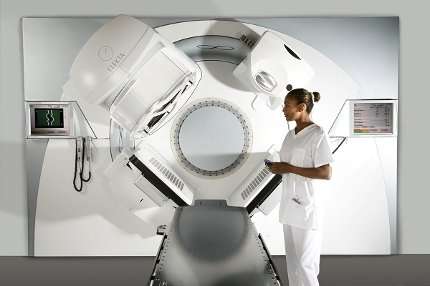- Home
- Editorial
- News
- Practice Guidelines
- Anesthesiology Guidelines
- Cancer Guidelines
- Cardiac Sciences Guidelines
- Critical Care Guidelines
- Dentistry Guidelines
- Dermatology Guidelines
- Diabetes and Endo Guidelines
- Diagnostics Guidelines
- ENT Guidelines
- Featured Practice Guidelines
- Gastroenterology Guidelines
- Geriatrics Guidelines
- Medicine Guidelines
- Nephrology Guidelines
- Neurosciences Guidelines
- Obs and Gynae Guidelines
- Ophthalmology Guidelines
- Orthopaedics Guidelines
- Paediatrics Guidelines
- Psychiatry Guidelines
- Pulmonology Guidelines
- Radiology Guidelines
- Surgery Guidelines
- Urology Guidelines
MRI as good as Transvaginal ultrasound for diagnosing lower bowel endometriosis

Magnetic resonance imaging is as good as Transvaginal ultrasound for diagnosing lower bowel endometriosis and if both are combined they offer 100% diagnostic accuracy in rectosigmoid endometriosis.
Transvaginal ultrasound and magnetic resonance imaging (MRI) combo may offer the best results for diagnosing lower bowel endometriosis, suggested a study published in the National Institute of Health Research. The study showed that transvaginal ultrasound and MRI, both offer similar accuracy for diagnosing lower bowel endometriosis.
Both transvaginal ultrasound (TVS) and Magnetic resonance imaging are used in the diagnosis of rectosigmoid endometriosis (RE) which occurs in 90% of the cases of severe Intestinal endometriosis. The present systematic review and meta-analysis were conducted to compare the accuracy of TVS versus Magnetic resonance imaging in the diagnosis of RE in the same population.
A systematic review was conducted in accordance with the PRISMA guidelines. Studies were identified by searching the MEDLINE, Embase, and LILACS databases, as well the reference lists of retrieved articles, through February 2019. The authors included all cross-sectional studies that evaluated the accuracy of TVS versus Magnetic resonance imaging in the diagnosis of RE within the same sample of subjects and that used surgical findings with histological confirmation as the gold standard. The QUADAS-2 instrument was used to evaluate study quality. Sensitivity, specificity, positive likelihood ratios (LR+), and negative likelihood ratios (LR-) for the diagnosis of RE were calculated.
Eight studies were included in the meta-analysis.
- The pooled sensitivity, specificity, LR+, and LR- values of MRI for RE were 90%, 96%, 17.26, and 0.15; values of TVS were 90%, 96%, 20.66 and 0.12, respectively.
- Areas under the S-ROC curves (AUC) showed no statistically significant differences between MRI and TVS in the diagnosis of RE.
- Moreover, considering the average prevalence among the studies of 47.3%, both methods demonstrated similarly high positive post-test probabilities, and the combined use of them yielded a post-test probability of 99.6%.
"MRI and TVS have similarly high accuracy and positive post-test probabilities in the noninvasive diagnosis of rectosigmoid endometriosis(RE). Combination of MRI and TVS may increase even further the positive post-test probabilities to near 100%." concluded the authors.
For further reference, click on the link
doi: 10.3310/signal-000791

Disclaimer: This site is primarily intended for healthcare professionals. Any content/information on this website does not replace the advice of medical and/or health professionals and should not be construed as medical/diagnostic advice/endorsement or prescription. Use of this site is subject to our terms of use, privacy policy, advertisement policy. © 2020 Minerva Medical Treatment Pvt Ltd